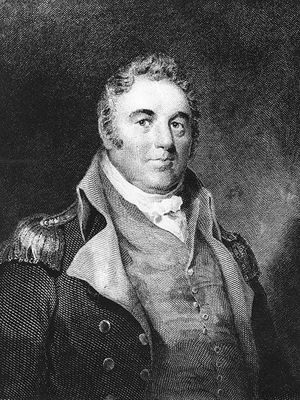
Naval History & Heritage Command photo NH 51764.
Capt. Richard Dale.
After the outbreak of the American Revolution, Dale became an officer in the Virginia State Navy. Taken prisoner by the British, he joined the Loyalist forces but was subsequently captured by the Continental Brig Lexington. That vessel’s commanding officer, John Barry, persuaded young Dale to return to the American cause. Dale served as an officer in Lexington from mid-1776 until she was taken by the British cutter Alert on 19 September 1777. Imprisoned in England, Dale twice escaped, finally making his way to France. His next billet was as first lieutenant on board the Continental warship Bonhomme Richard, commanded by John Paul Jones. He performed valiantly during her desperate fight with HMS Serapis on 23 September 1779. For the remainder of the war, Dale served in the frigates Alliance and Trumbull and was Commanding Officer of the privateer Queen of France.
After the Revolution, Dale was again a merchant marine officer. When the United States established its Navy in 1794, he was one of the first six men appointed to the rank of captain, although the Navy’s lack of ships ensured that he was primarily employed in commercial trade for the next four years.
In 1798, after undeclared war began with France, Dale took command of USS Ganges, in which he cruised in search of enemy shipping. Returning to the merchant marine, he made a cruise to China in 1799.
In 1801 Captain Dale was given command of a U.S. Navy squadron and sent to the Mediterranean Sea to confront the piratical states along the North African coast. Relieved of this command in 1802, after a successful cruise, he resigned his commission shortly afterwards.
Captain Dale spent the rest of his life in Philadelphia, Pennsylvania, where he was a prominent citizen and active in local defense efforts during the War of 1812. He died there on 26 February 1826.
Source: Naval Historical Center including Dictionary of American Naval Fighting Ships.